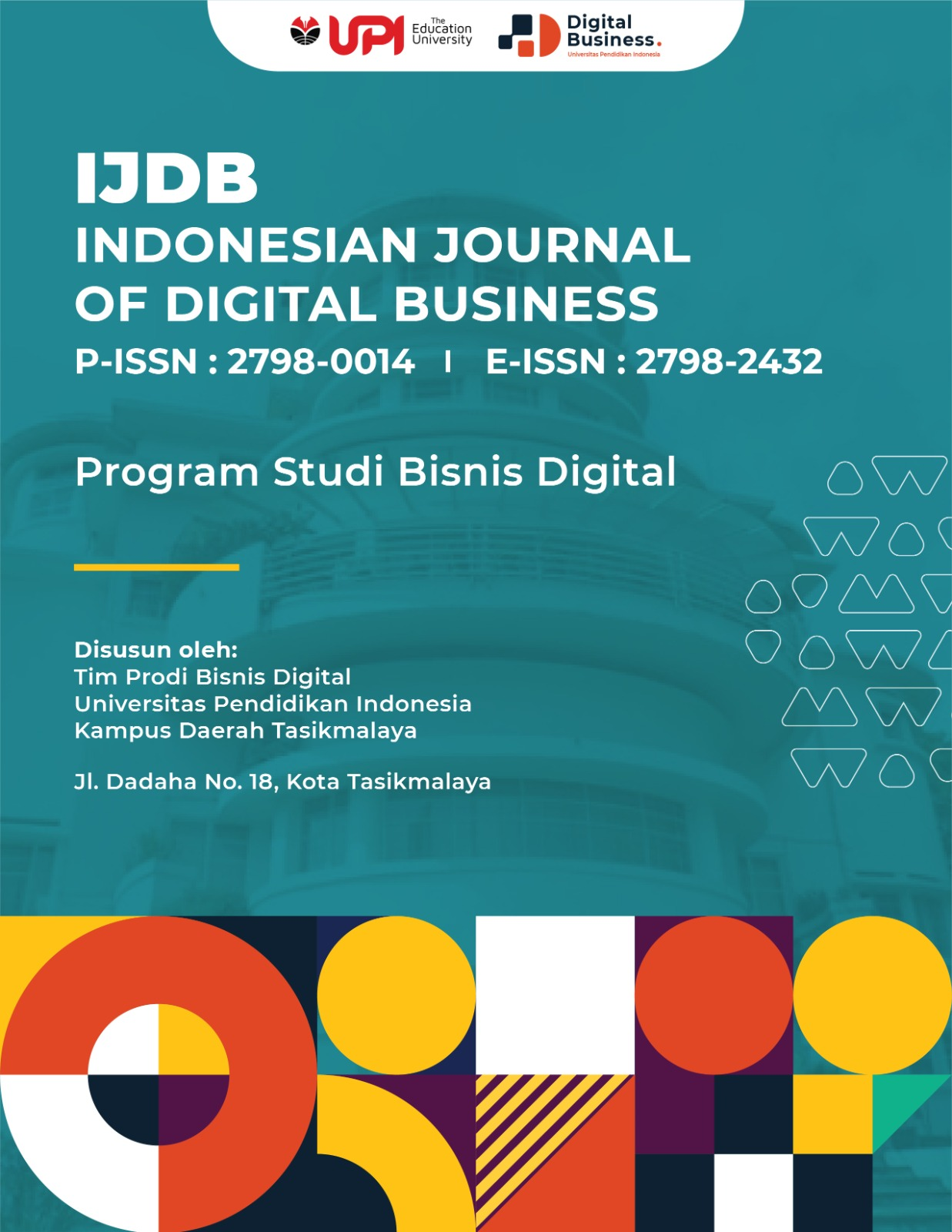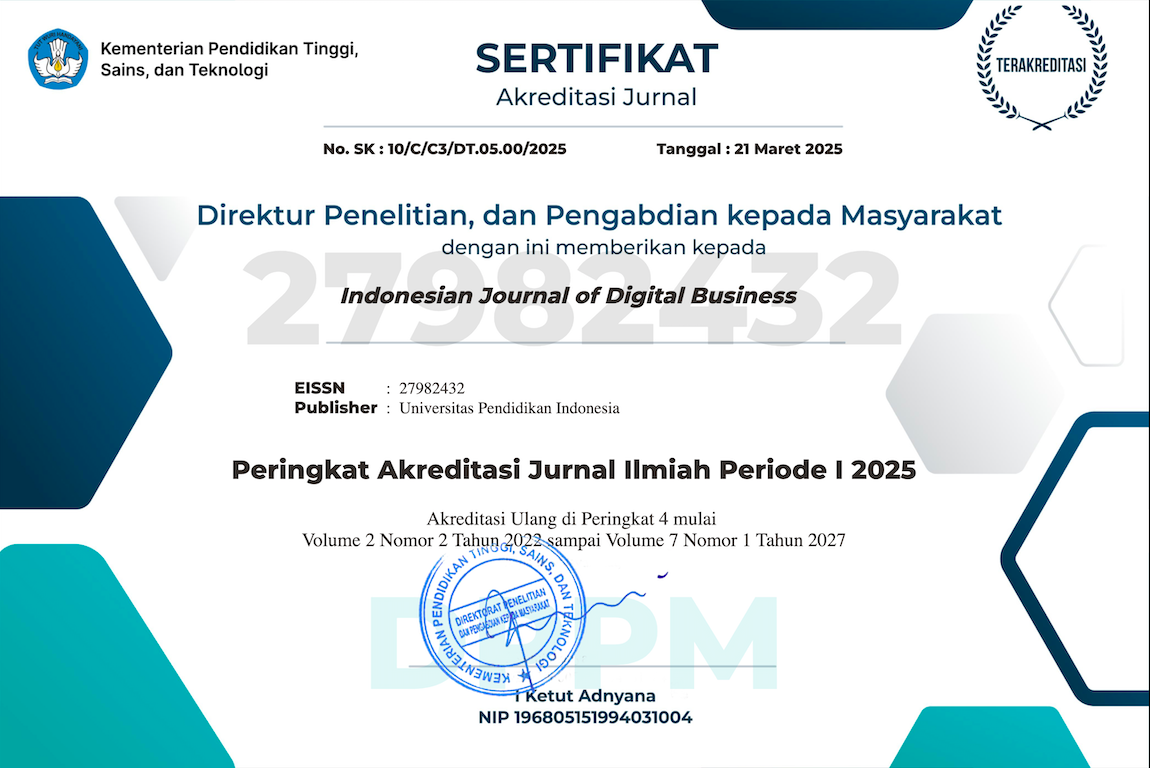Implementasi Algoritma Naive Bayes untuk Filtrasi Spam Komentar Judi Online pada YouTube
Abstract
Keywords
Full Text:
PDFReferences
Abdullah, A. O., Ali, M. A., Karabatak, M., & Sengur, A. (2018). A comparative analysis of common YouTube comment spam filtering techniques. 2018 6th International Symposium on Digital Forensic and Security (ISDFS), 1–5. https://doi.org/10.1109/ISDFS.2018.8355315
Christian, H., Agus, M. P., & Suhartono, D. (2016). Single Document Automatic Text Summarization using Term Frequency-Inverse Document Frequency (TF-IDF). ComTech: Computer, Mathematics and Engineering Applications, 7(4), 285. https://doi.org/10.21512/comtech.v7i4.3746
Daniel, J., & Martin, J. H. (2024). Naive Bayes, Text Classifica tion, and Sentiment.
Fernando, J. R., Budiraharjo, R., & Haganusa, E. (2019). Spam Classification on 2019 Indonesian President Election Youtube Comments Using Multinomial Naïve-Bayes. Indonesian Journal of Artificial Intelligence and Data Mining, 2(1). https://doi.org/10.24014/ijaidm.v2i1.6445
Ghatasheh, N., Altaharwa, I., & Aldebei, K. (2022). Modified Genetic Algorithm for Feature Selection and Hyper Parameter Optimization: Case of XGBoost in Spam Prediction. IEEE Access, 10, 84365–84383. https://doi.org/10.1109/ACCESS.2022.3196905
Han, J., Pei, J., & Tong, H. (2022). Data mining: concepts and techniques. Morgan kaufmann.
Hani, D. (2023). Klasifikasi Masalah Pada Komunitas Marah-Marah Di Twitter Menggunakan Bidirectional Long Short-Term Memory.
Hayoung. (2021). A YouTube Spam Comments Detection Scheme Using Cascaded Ensemble Machine Learning Model. IEEE Access, 9, 144121–144128. https://doi.org/10.1109/ACCESS.2021.3121508
Kudo, T., & Richardson, J. (2018). SentencePiece: A simple and language independent subword tokenizer and detokenizer for Neural Text Processing. http://arxiv.org/abs/1808.06226
Mahmoud, T. M., El Nashar, A. I., Abd-El-Hafeez, T., & Khairy, M. (2014). An Efficient Three-phase Email Spam Filtering Technique. In British Journal of Mathematics & Computer Science (Vol. 4, Issue 9). www.sciencedomain.org
Makarin, A. A., & Astuti, L. (2023). Faktor yang Mempengaruhi Mahasiswa Melakukan Perjudian Online. Indonesian Journal of Criminal Law and Criminology (IJCLC), 3(3), 180–189. https://doi.org/10.18196/ijclc.v3i3.17674
Murphy, K. P. (2012). Machine learning: a probabilistic perspective. MIT press.
Paramartha, P., Dewi, A., & Seputra, P. (2021). Sanksi Pidana terhadap Para Pemasang dan Promosi Iklan Bermuatan Konten Judi Online. Jurnal Preferensi Hukum, 2(1), 156–160. https://doi.org/10.22225/jph.2.1.3062.156-160
Rangga Gelar Guntara. (2023). Aplikasi Deteksi Phising Berbasis Android Menggunakan Metode Pengembangan Perangkat Lunak DSRM. Jurnal Minfo Polgan, 12(1), 303–310. https://doi.org/10.33395/jmp.v12i1.12379
Samsudin, N. M., Mohd Foozy, C. F. B., Alias, N., Shamala, P., Othman, N. F., & Wan Din, W. I. S. (2019). Youtube spam detection framework using naïve bayes and logistic regression. Indonesian Journal of Electrical Engineering and Computer Science, 14(3), 1508–1517. https://doi.org/10.11591/ijeecs.v14.i3.pp1508-1517
Schröer, C., Kruse, F., & Gómez, J. M. (2021). A systematic literature review on applying CRISP-DM process model. Procedia Computer Science, 181, 526–534. https://doi.org/10.1016/j.procs.2021.01.199
Shahriar, A. (2024). Improving Bengali and Hindi Large Language Models.
Sugiyono, D. (2013). Metode penelitian pendidikan pendekatan kuantitatif, kualitatif dan R&D.
Tantithamthavorn, C., McIntosh, S., Hassan, A. E., & Matsumoto, K. (2017). An Empirical Comparison of Model Validation Techniques for Defect Prediction Models. IEEE Transactions on Software Engineering, 43(1), 1–18. https://doi.org/10.1109/TSE.2016.2584050
Yadav, S., & Shukla, S. (2016). Analysis of k-Fold Cross-Validation over Hold-Out Validation on Colossal Datasets for Quality Classification. Proceedings - 6th International Advanced Computing Conference, IACC 2016, 78–83. https://doi.org/10.1109/IACC.2016.25
Zeng, G. (2020). On the confusion matrix in credit scoring and its analytical properties. Communications in Statistics - Theory and Methods, 49(9), 2080–2093. https://doi.org/10.1080/03610926.2019.1568485
DOI: https://doi.org/10.17509/ijdb.v5i2.88641
Refbacks
- There are currently no refbacks.
Copyright (c) 2025 Universitas Pendidikan Indonesia (UPI)

This work is licensed under a Creative Commons Attribution-ShareAlike 4.0 International License.
Indonesian Journal of Digital Business is published by Universitas Pendidikan Indonesia (UPI)
and managed by Department of Digital Business
Jl. Dr. Setiabudi No.229, Kota Bandung, Indonesia - 40154
View My Stats





1.png)